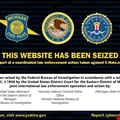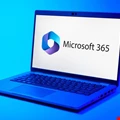Infosecurity News

Infosecurity's Top 10 Cybersecurity Stories of 2025
Explore Infosecurity Magazine’s most-read cybersecurity stories of 2025, from major vendor shake-ups and zero-day exploits to AI-driven threats and supply chain attacks

SEC Charges Crypto Firms in $14m Investment Scam
The SEC has charged several crypto platforms and investment clubs for defrauding US investors of more than $14m

Coordinated Scams Target MENA Region With Fake Online Job Ads
A coordinated wave of fake online job ads targeting the Middle East and North Africa has been uncovered, exploiting remote work trends

NIST, MITRE Partner on $20m AI Centers For Manufacturing and Cybersecurity
NIST and MITRE are collaboratively launching two centers to advance AI security for US manufacturing and critical infrastructure

ServiceNow to Pay $7.8bn For OT Security Specialist Armis
ServiceNow is set to acquire Armis for $7.75bn in a cash-only deal expected to close in the second half of 2026

La Poste Still Offline After Major DDoS Attack
French postal service warns of “major network incident” just before Christmas

Reworked MacSync Stealer Adopts Quieter Installation Process
A newly discovered macOS malware mimics legitimate apps code-signed and notarized by Apple

Clop Ransomware Group Linked to 3.5m University of Phoenix Breach
A University of Phoenix data breach affecting nearly 3.5 million individuals has been claimed by the Clop ransomware collective

Top Ransomware Trends of 2025
Infosecurity has selected some of the key ransomware statistics for 2025

Nissan: Thousands Impacted By Red Hat Breach
Nissan has revealed that over 20,000 customers have had personal information compromised in a third-party data breach

Hundreds of Arrests as Operation Sentinel Recovers $3m
Operational Sentinel helps to crack down on cybercrime across 19 African countries in a month-long campaign

86% Surge in Fake Delivery Websites Hits Shoppers During Holiday Rush
NordVPN has warned that malicious postal service websites have surged by 86% over the past month, targeting holiday delivery tracking

Monitoring Tool Nezha Abused For Stealthy Post-Exploitation Access
Open-source server monitoring tool, Nezha, is being exploited by attackers for remote system control

UK: NHS Supplier Confirms Cyber-Attack, Operations Unaffected
DXS International, an official partner of NHS England, said the breach has not affected its operations

Nefilim Ransomware Affiliate Pleads Guilty
A Ukrainian man has pleaded guilty to charges connecting him to Nefilim ransomware attacks

Scripted Sparrow Sends Millions of BEC Emails Each Month
Fortra has uncovered a prolific BEC group dubbed “Scripted Sparrow” spanning three continents and at least five countries

Denmark Blames Russia for "Destructive" Cyber-Attacks
The Danish intelligence service believes some pro-Russian hacktivist groups have links with the Kremlin

US Charges 54 in Massive ATM Jackpotting Conspiracy
The US has charged 54 individuals in a massive ATM jackpotting conspiracy linked to Venezuelan crime syndicate Tren de Aragua, accused of stealing millions

FBI Disrupts Russian Crypto Laundering Hub Enabling Cybercrime
A 39-year-old Russian national is accused of working with cybercriminals to convert criminal proceeds from cryptocurrency into various cash currencies

OAuth Device Code Phishing Campaigns Surge Targets Microsoft 365
A surge in phishing attacks exploiting Microsoft’s OAuth device code flow has been identified by Proofpoint



